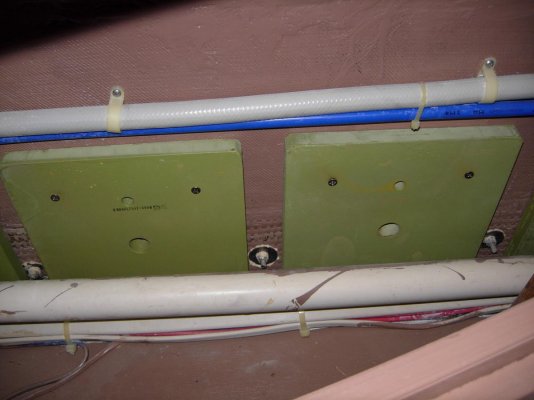We all know what "added" ballast in a boat is primarily meant to accomplish. What we do not know: Why wasn't the boat designed in the first place to not need "added" ballast?
"Added" ballast, although a useful commodity when required do to a boat's design, is quite simply "dead weight" that uses fuel as well as increases lifting and setting needs during haul out and/or dry storage... for any reason.
I've never owned a boat that required "added" ballast to correctly perform. I know of plenty of boats that do. All my boats without "added" ballast correctly performed.
Added ballast in a boat makes me quickly shy away when shopping for a boat.
I hope some of the design gurus on TF can enlighten me and others on the pros and cons of "added" ballast's true needs and true benefits just in order to enable a boat's design to perform correctly in the water... wherein without the "added" ballast it simply does not act very well at sea.
Art
"Added" ballast, although a useful commodity when required do to a boat's design, is quite simply "dead weight" that uses fuel as well as increases lifting and setting needs during haul out and/or dry storage... for any reason.
I've never owned a boat that required "added" ballast to correctly perform. I know of plenty of boats that do. All my boats without "added" ballast correctly performed.
Added ballast in a boat makes me quickly shy away when shopping for a boat.
I hope some of the design gurus on TF can enlighten me and others on the pros and cons of "added" ballast's true needs and true benefits just in order to enable a boat's design to perform correctly in the water... wherein without the "added" ballast it simply does not act very well at sea.
Art
Last edited:


 Were you not involved with all the discussion on earlier post of some time ago,regarding how and reasons for the 'Slo~Belle' requiring 1400# over the 1500#installed on build design by Ed Monk. that you would ask. Did you miss all of that?????
Were you not involved with all the discussion on earlier post of some time ago,regarding how and reasons for the 'Slo~Belle' requiring 1400# over the 1500#installed on build design by Ed Monk. that you would ask. Did you miss all of that?????



